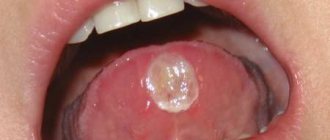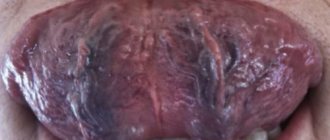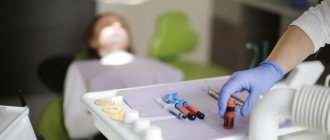What can inflammation of the salivary gland ? Read the answer to this question in this article.
The human body is a complex mechanism consisting of a huge number of organs and systems. Several structures are responsible for performing the same function, constantly complementing each other. For example, different organs take part in the digestion process.
In the human body during normal development there are three pairs of salivary glands
The parotid gland is most often affected by various diseases. There are a number of diseases in which the sublingual and submandibular salivary glands become inflamed. If you do not start treatment on time or undergo inappropriate therapy, then serious complications may occur after such diseases, such as encephalitis, orchitis, meningitis, nephritis, neuritis and pancreatitis. However, do not worry, treatment often gives positive results. To avoid inflammation of the salivary glands, you just need to follow a few recommendations.
Prevention of inflammation of the floor of the mouth
To prevent diseases of the sublingual area, dentists give recommendations on proper oral care:
- take care of your gums;
- avoid the accumulation of bacterial plaque;
- visit the dentist 2 times a year;
- prevent the occurrence of caries;
- brush your teeth 2 times a day.
But if the patient has congenital or acquired anomalies in the development of the floor of the oral cavity, such as a shortened frenulum or structural asymmetry, then you will have to be more careful to prevent injury. Some abnormalities can be treated. Come to an appointment at Family Dentistry and experienced specialists will tell you how to get rid of defects, tumors and inflammations.
Three types of inflammation of the salivary gland
Depending on the disease, there are three types of inflammation, namely catarrhal, purulent and gangrenous. First of all, a swelling forms in the area of the salivary gland, which is often accompanied by pain. The inflamed area becomes red, and the skin there is tense and shiny. The exit site of the gland duct has a limited area of edema and inflammation.
In most cases, a specific liquid is released from it, similar to saliva or pus. Body temperature rises sharply to 39 degrees. Opening your mouth becomes more and more difficult and painful. If treatment is not started on time, the disease will develop into a more severe form with serious consequences.
Causes
Only a doctor can determine the factors that provoke painful sensations. The reason could be this:
- Allergies that cause swelling and pain.
- Pathogenic bacteria that develop with sore throat and affect the bottom of the mouth.
- Mechanical bruises, injuries, damage to blood vessels, soft tissues, nerves.
- If the frenulum under the tongue becomes inflamed due to phlegmon, pus appears.
- Ordinary caries, which was not cured in time.
- Infection when the salivary gland becomes the source of the disease.
Patients with a short fold are more likely to be injured, even during normal conversation. Improper hygiene and dangerous cleaning of the oral cavity can also lead to the problem. Congenital bone asymmetry occurs.
Visual inspection
It is important to visit the clinic in time to correct the situation. The first consultation will allow the doctor to carefully examine the patient’s oral cavity and assess whether his throat hurts. If there is contamination, soft plaque removal is prescribed. This prevents the formation of hard deposits on the crowns. The doctor also asks the patient in detail what exactly is bothering him. Of particular importance is the presence of diseases that provoke pathology. The examination will help to objectively assess the condition of the soft tissues and draw up a treatment plan.
Determining the nature of plaques on crowns, the hygienic condition, damage to bone tissue, and the level of the inflammatory process makes it possible to make the right recommendations for the patient. Palpation can be used to identify associated anomalies, tissue consistency, bleeding gums, and tooth mobility. Tapping with the instrument will show what changes there are in the bone tissue. If additional diagnostic procedures are needed, other specialists are involved.
Painful sensations
Inflammation causes the following symptoms in patients:
- Severe pain can spread throughout the entire oral cavity, reaching the ears. The nature of the pain is shooting.
- The patient's body temperature rises.
- Swelling appears and the patient complains of discomfort.
- Swallowing and chewing become difficult.
- Movements of the tongue cause sharp pain.
If it hurts under the tongue on the right, a purulent focus or abscess could have formed there. Its appearance is explained by the fact that infections, streptococcal or staphylococcal microflora penetrate into the mucous membranes. Jaw movements, speech, and breathing are impaired. Profuse salivation appears. The patient's general condition is deteriorating, appetite and sleep are absent.
When there is pain under the tongue on the left at the root, this may be a side effect of diseases of the gastrointestinal tract, nervous system, or hormonal disorders. There is a burning sensation, tingling, tingling, and dry mouth. Discomfort at the base of the speech organ may indicate that the patient’s body is deficient in useful microelements and vitamins. Patients complain of swelling in the sublingual area. Microtraumas and external irritants have a negative effect on the frenulum. Violation of the integrity of the epithelium contributes to the development of infection. Injuries and burns in the oral cavity appear under the influence of acids, formaldehyde, alkalis, and alcohol. Such painful ulcers take a long time to heal. After thermal damage, glossitis may appear.
It is very difficult to diagnose this disease in the early stages.
In most cases, patients notice that something is wrong when the stone prevents the complete drainage of fluid. All this is accompanied by sharp pain, similar to salivary colic. At the site of inflammation, the tissues swell and become swollen. These symptoms are not constant, the pain either increases or disappears. During treatment, the stone is removed; if the situation is too advanced, sometimes the entire gland is removed.
The salivary glands under the tongue extremely rarely. But at the same time, the disease develops at a rapid pace and can have adverse consequences.
In order to maintain your health, first of all, you must adhere to the rules of hygiene and if you experience the slightest discomfort, immediately consult a doctor.
Which doctor should I contact?
If you have the slightest discomfort or pain in the space under the speech organ, you should visit a therapist. Consultation with an allergist may be required. Most often, dentists deal with problems of the floor of the mouth. It is important to regularly visit the hygienist. Professional oral cleaning prevents many dental and soft tissue problems.
In case of frenulum injuries, rinsing with romazulan, chlorophyllipt, and stomatophyte is prescribed. The disease requires repeated rinsing: in the morning, after meals, in the evening. The affected area is treated with antiseptic drugs and agents to relieve the inflammatory process. If the salivary glands are affected, therapy should be started before an abscess appears. Medicines are injected into the pathological gland, antibiotics, drugs for salivation, and a course of physiotherapy are prescribed.
When an abscess forms, the patient needs a surgeon to clean out the gland cavity. As a preventive measure, dentists recommend proper oral care. It is necessary to take care of the gum tissue, prevent the accumulation of pathogenic microbes, treat caries in a timely manner, and clean the oral cavity twice a day. You need to visit the dentist once every six months. Patients with a shortened frenulum and asymmetry of its structure need to be careful to avoid injury.
How inflammation develops
To prevent such inflammation, teach your child to follow simple hygiene standards. It is very important to brush your teeth regularly. If a child finds a wound in his mouth, it should be immediately treated with brilliant green or iodine. Invite your child to rinse his mouth thoroughly with a decoction of chamomile, calendula, sage, a weak solution of potassium permanganate or soda. All these products have an antibacterial effect. If swelling or painful redness appears, take your child to the doctor immediately. He will recommend how to proceed further. Don't risk your child's health and don't waste time on self-medication! Under no circumstances should this swelling be rubbed, iced, or heated. Because of this, the abscess can burst inside.
General recommendations
For stomatitis in adults, treatment is carried out on an outpatient basis. The dentist can perform initial treatment of the oral cavity, then the patient will need to perform all the manipulations independently at home.
Antiseptic treatment of the entire oral cavity is a prerequisite for the successful treatment of stomatitis and the rapid recovery of the affected mucosa. For “disinfection”, solutions containing chlorhexidine, furatsilin or metronidazole are used. Dentists also recommend rinsing with a soda solution every 2-3 hours.
Locally in the affected areas, it is necessary to remove heavy plaque using gauze and apply anti-inflammatory and regenerating gels or ointments to the areas where ulcers accumulate. The procedure is unpleasant, but significantly speeds up recovery.
Treatment of stomatitis on the tongue in adults, subject to all prescriptions and recommendations of the dentist, takes no more than 10 days. Symptoms of the disease disappear after 3–5 days; a few more days are required to restore the affected tissues.
How to treat an abscess in children
To identify an abscess, a puncture is often performed. This will make it possible to find out which specific pathogen caused the abscess. Also, the doctor will immediately determine which antibiotic is most effective against it. Most often, treatment is surgical. The doctor opens the abscess, cleans it, treats it with antibacterial agents, prescribes antibiotics and other drugs. Physiological procedures support the treatment. For a superficial abscess, the doctor will administer anesthesia with novocaine. Once the autopsy is performed, treatment will be the same as for normal wounds.
As a result, we emphasize once again that it is easier to avoid such inflammation than to treat it later. Just don't forget about basic hygiene. Well, if symptoms of the disease appear, immediately go to the doctor.
Diagnostics
To accurately diagnose tongue cancer, laboratory and hardware tests are required. However, first of all, the patient should consult an ENT oncologist, who will give the necessary directions. Among the diagnostic methods:
- blood for tumor markers, other laboratory blood tests;
- biopsy of the affected area followed by histological examination;
- revision (revision) of the biopsy;
- MRI of soft tissues of the neck and face using contrast;
- CT scan of the neck and head with contrast;
- PET-CT.
As a conclusion
You should not self-medicate if the situation gets out of control. At the slightest change in the condition of the tongue and mucous membranes, it is best to go to the hospital.
If the disease is chronic, such as a stomach ulcer, then to avoid complications you should take medications prescribed by your doctor and also follow a diet.
The tongue is an organ in the mouth that consists almost entirely of muscle tissue. Part of its surface contains taste buds, and it performs important functions in chewing, swallowing and speaking. Swelling of the tongue is a pathology in which its volume begins to exceed its standard dimensions.
If the swelling occurs instantly, it may be a sign of an acute anaphylactic reaction. Otherwise, there are a number of other factors, from illness to injury, that could cause a swollen tongue.
Treatment
If tongue cancer is detected, there are several types of treatment:
- Surgery. The operation is used most often and allows for recovery in 80% of situations. When the tumor is removed, the tongue may be partially or completely removed. In advanced cases, part of the jaw bone is also removed, then the jaw structures can be restored using special methods.
- Radiation therapy. When fighting tongue cancer it gives good results, also up to 80% effective. Can be used either alone or in combination with surgery.
- Chemotherapy. Prescribed if metastases are detected.
Both chemotherapy and radiation therapy can be palliative - that is, they are carried out in cases where the patient can no longer be cured, but his condition can be maintained and the quality of life can be improved.
Forecasts
With timely consultation with a doctor and proper treatment, the five-year survival rate for tongue cancer is about 90%. If the cases are advanced, but without metastases, this percentage drops to 60%. When metastases have spread, the five-year survival rate is less than 35%.
Possible consequences
If the swelling is not eliminated in time, then negative consequences will not keep you waiting. They may appear as follows:
- chronic or acute respiratory dysfunction;
- violation of a person’s aesthetic appearance (almost constantly open mouth with tongue hanging out);
- psychological discomfort;
- speech distortion;
- malocclusion;
- disruption of the gastrointestinal tract;
- copious amounts of saliva;
- tooth decay and loss.
Swollen after puncture
Many patients complain that their tongue is swollen after piercing. In most cases, this swelling is not pathological. The tongue was injured during the puncture process, and slight swelling is completely natural and natural. Therefore, it is necessary to strictly adhere to the recommendations of the specialist who performed the puncture, keep the oral cavity clean, and rinse your mouth with antibacterial drugs. However, if the swelling does not go away within 4-5 days, and purulent exudate forms at the puncture site, you should immediately consult a doctor, since various complications often arise with tongue piercing.
Normally, healing after a puncture occurs within two weeks. During this period, the tongue may swell, hurt, and the patient may experience a feeling of discomfort, burning, and soreness. In the future, all these unpleasant symptoms will disappear, and after two weeks the wound should heal without a trace, and the swelling should go away.
Varieties
There are two main classifications of tongue tumors: according to the form of the disease and according to histological structure. Let's look at them.
The forms of tongue cancer are as follows:
- Ulcerative . With this form, an ulcerated, bleeding tumor is found on the tongue.
- Papillary . A dense growth forms on the tongue on the so-called “pedicle” or on a wide base.
- Infiltrative . The tumor is located deep within the organ.
Classification according to histological structure:
- adenocarcinoma;
- squamous cell carcinoma (the most common - 95% of cases);
- basal cell.
Types of tongue cancer
In 90% of cases, malignant tumors are represented by squamous cell carcinoma of the tongue. It develops from the cells of the mucous membrane that lines the surface of the tongue and the oral cavity.
The human tongue anatomically consists of two parts. The front two thirds are called the body of the tongue, the back third is called the root. Malignant tumors of the body are classified as oral cancer. They are usually easy to notice and diagnose early. Tumors of the root of the tongue are cancer of the oropharynx. He remains asymptomatic for a very long time. Often it can be diagnosed at a stage when there are already metastases in the lymph nodes of the neck.
Stages
Cancer of the root of the tongue or its body is divided into four stages:
- 1st (initial). At this stage, oncology is often confused with glossitis, stomatitis and other diseases. The person himself may mistake unwanted stains for plaque. There are few symptoms.
- 2nd. Clinical manifestations begin: compactions, tumors, pain. The pain often radiates to neighboring organs (neck, ears). Suppuration and infection of the tumor may occur. The tongue often swells and becomes numb. Already at this stage, metastases from tongue cancer are possible - usually to nearby lymph nodes.
- 3rd. If you ignore the symptoms of the second stage, aggressive penetration of cancer into the thickness of the tongue and neighboring tissues begins. Tissue breakdown also begins.
- 4th. At this stage, metastases are observed in various organs: lungs, liver, bones. Treatment at the fourth stage, as a rule, is limited to palliative care; patients rarely survive more than a year.
It is important not to let the situation get worse and pay attention to the signs of tongue cancer in time - then there will be a much greater chance of recovery.
Features of diagnosis and treatment of pain under the tongue
Treatment of pain in the sublingual area should be carried out after a high-quality diagnosis to determine the root cause of the problem. Sometimes, pain in the frenulum under the tongue or in the surrounding tissues is treated by therapists or allergists, but in most cases this is done by dentists, because about 90% of all cases of treatment are associated with a dental problem.
Diagnosis of pain under the tongue is carried out in several stages:
- Initial appointment - the doctor collects anamnesis, finds out information about the nature and location of pain, and also examines the patient’s oral cavity;
- A complete diagnostic examination is carried out in the absence of characteristic symptoms of common dental diseases. It is possible to use hardware techniques (X-ray, ultrasound, MRI, etc.);
- Differential diagnosis – a specialist differentiates the underlying pathology from similar diseases;
- Making a diagnosis and prescribing treatment - based on the data of the initial examination and diagnosis, the doctor establishes an accurate diagnosis and prescribes an adequate treatment regimen.
Note! The method of treatment and the choice of drugs to eliminate pain in the sublingual area directly depend on the root cause of the symptoms. For example, if your frenulum hurts due to a mechanical injury, antiseptic and anti-inflammatory solutions for mouth rinsing will be prescribed, including: chlorophyllipt, hexoral, stomatophyte, alcohol tincture of calamus, stomatidine or others. If the pain is associated with the development of bacteria or fungi, antibacterial, antifungal and anti-inflammatory therapy is prescribed.










